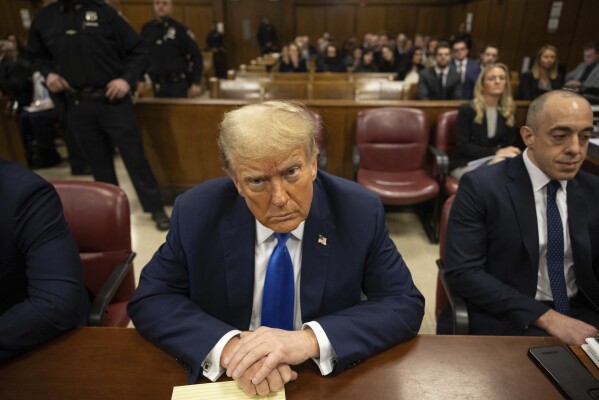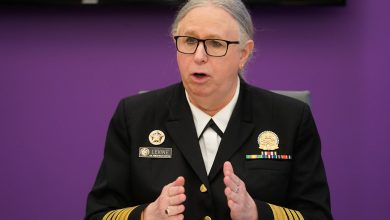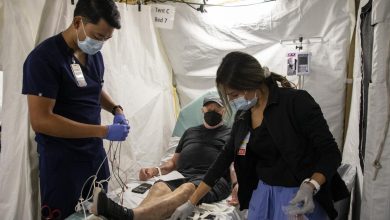Why Some Personal-Injury Lawyers Quietly Love the Trump Administration

When people recall the Trump administration, they often think of deep political divides, heated rhetoric, and historic clashes over democracy, culture, and the economy. Rarely do they imagine personal-injury lawyers quietly benefiting from the turbulence. Yet, beyond the noise of partisan conflict, certain areas of the legal profession—especially personal-injury law—found unexpected opportunities to grow.
This outcome may seem paradoxical. Trump and his allies frequently advocated for “tort reform,” calling for limits on lawsuits and caps on damages, measures that would normally shrink the field for injury attorneys. However, the reality proved more nuanced. Through shifts in regulation, healthcare policy, workplace safety enforcement, and public attitudes toward litigation, the Trump era unintentionally created conditions in which many personal-injury lawyers could not only survive, but prosper.
1. Deregulation: A Double-Edged Sword That Benefits Lawyers
The Trump administration proudly touted deregulation as one of its central achievements. From environmental rules to workplace safety standards, industries were relieved of many compliance burdens. Businesses large and small applauded the “freedom to grow” without what they saw as government red tape.
Related Article: Trump’s Health Care Records System Explained: A Game-Changer for Patients or Political Hype?
But here’s the catch: fewer regulations often mean more accidents, more negligence, and more harm to workers and consumers. For personal-injury lawyers, this deregulation wave became a steady pipeline of potential cases.
- Workplace Injuries: Rollbacks in Occupational Safety and Health Administration (OSHA) enforcement meant less stringent oversight of dangerous industries like construction, trucking, and manufacturing. More corners cut by employers translated into more accidents—and more lawsuits.
- Environmental Harm: The loosening of Environmental Protection Agency (EPA) rules opened the door to pollution and toxic exposure claims. Lawyers specializing in mass torts found fertile ground in communities suffering from chemical spills, air pollution, and unsafe water.
- Product Liability: Reduced oversight of consumer products meant unsafe products occasionally made it to market. Every defective medical device, faulty car part, or unsafe household product became a potential payday for trial lawyers.
In essence, deregulation created risk, and risk created opportunity—for lawyers ready to represent the injured.
2. Healthcare Battles and the Affordable Care Act
The Trump administration’s repeated attempts to repeal or weaken the Affordable Care Act (ACA) shook the healthcare system. While the ACA remained partially intact, the uncertainty created real consequences.
For injured individuals, healthcare coverage gaps meant that many turned to litigation as a lifeline to recover not only damages but also the medical care they desperately needed. Personal-injury lawyers, often operating on contingency fees, became more vital than ever to clients facing staggering hospital bills without reliable insurance.
Moreover, attacks on protections for preexisting conditions heightened the stakes in personal-injury lawsuits. Victims had to secure compensation not only for their injuries but also for long-term care that insurance companies might refuse to cover. In this climate, injury lawyers weren’t just litigators—they were lifelines.
Related Article: Trump Diagnosed with Chronic Venous Insufficiency: What Does This Mean for His Future?
3. Trump’s Infrastructure Boom: More Roads, More Risks
Donald Trump frequently spoke of rebuilding America’s infrastructure. While many of his proposals never fully materialized, some initiatives—particularly those involving highways, bridges, and energy projects—did move forward.
More construction means more trucks on the road, more heavy machinery, and more dangerous worksites. For personal-injury attorneys, the surge in construction-related accidents was a quiet boon. Trucking accidents, especially involving overworked drivers pushing deadlines, became a major area of litigation.
Furthermore, large infrastructure projects often involved contractors and subcontractors fighting over liability when accidents occurred. Personal-injury lawyers skilled in navigating complex liability chains found themselves in demand.
4. The Trump Effect on Public Attitudes Toward Litigation
Trump’s populist, anti-elite messaging had an interesting side effect: it reshaped how many Americans viewed lawsuits. Historically, tort reform advocates painted personal-injury lawyers as greedy opportunists exploiting the system. But Trump’s rhetoric, which frequently targeted “big corporations,” “rigged systems,” and “corrupt elites,” resonated with ordinary people who increasingly saw litigation as one of the few ways to fight back.
- Against Big Business: When corporations were portrayed as careless or exploitative, juries were more willing to side with injured plaintiffs.
- Distrust in Institutions: As faith in government oversight declined, more people saw the courtroom as their best shot at justice.
- Populist Energy: Trump’s own identity as a businessman who often used lawsuits to his advantage normalized litigation as a tool of empowerment.
Personal-injury lawyers didn’t need to campaign for this shift—it unfolded naturally in the cultural undercurrents of the Trump era.
5. Immigration Policies and Workplace Exploitation
Another surprising area where personal-injury lawyers benefited was immigration. Trump’s restrictive immigration policies created a shadow workforce of undocumented individuals afraid to report unsafe working conditions or abuse.
Ironically, this made these workers even more vulnerable to exploitation and injury. When accidents happened—whether in agriculture, construction, or factories—personal-injury lawyers who catered to immigrant communities found a surge in cases. Employers cutting corners, assuming undocumented workers wouldn’t fight back, were often shocked when attorneys brought cases forward on behalf of their clients.
6. Polarization, Protests, and Civil Unrest
The Trump years were marked by political polarization, protests, and at times, civil unrest. From Charlottesville to George Floyd demonstrations, clashes between protesters, counter-protesters, and police brought physical injuries into the spotlight.
While many of these situations raised constitutional and civil rights questions, they also crossed into the territory of personal injury. Protesters injured by vehicles, excessive police force, or unsafe crowd-control measures often turned to lawyers. For firms willing to take politically sensitive cases, the Trump era was a period of unprecedented demand.
7. Insurance Industry Shifts
Insurance companies responded to deregulation and market shifts by tightening policies and aggressively denying claims. While this made life harder for the injured, it created fertile ground for personal-injury attorneys who specialize in battling insurers.
- Bad Faith Insurance Claims: When insurers wrongfully denied coverage, lawyers had opportunities to sue not just for compensation but for punitive damages.
- Higher Stakes Litigation: With insurance companies less willing to settle, more cases went to trial, increasing visibility—and potential jury awards—for personal-injury firms.
Trump’s business-friendly climate emboldened insurers, but it also emboldened plaintiffs’ attorneys to push back harder.
8. Judicial Appointments: A Mixed Blessing
The Trump administration reshaped the federal judiciary, appointing hundreds of conservative judges. At first glance, this might seem like bad news for injury lawyers, as conservative judges often lean pro-business. But the reality was nuanced.
Many of these judges were strict textualists, meaning they adhered closely to the written law. In some personal-injury cases, this approach benefited plaintiffs, especially when statutes clearly favored consumer protection. Moreover, the increased predictability of rulings under textualist judges allowed savvy lawyers to better strategize their cases.
9. The Media Spotlight and High-Profile Cases
Trump’s presidency kept the media in a constant frenzy. Stories about injustice, inequality, and corporate negligence gained traction because they tied into larger narratives of power and abuse. Personal-injury lawyers who aligned their cases with these themes often found themselves in the spotlight.
Consider lawsuits involving dangerous pharmaceuticals or corporate cover-ups. Media outlets hungry for stories that resonated with the public’s mood amplified these cases, boosting the reputations—and client lists—of the attorneys involved.
Related Article: Donald Trump: I Would ‘Close Down’ Part of The Internet To Prevent ISIS From Using It
10. The Quiet Strategy: Why Lawyers Don’t Say It Out Loud
So, if the Trump administration provided fertile ground for personal-injury lawyers, why don’t they shout it from the rooftops? The answer is simple: optics.
Trial lawyers traditionally align with Democratic politics, which oppose tort reform and support consumer protections. Publicly praising Trump could alienate their base, especially in urban areas where most large firms thrive. Thus, many lawyers enjoyed the benefits quietly, acknowledging behind closed doors that deregulation and polarization created opportunities, even if they disagreed with Trump on nearly everything else.
Conclusion: The Paradox of Pain and Profit
The story of why some personal-injury lawyers quietly love the Trump administration is a story of paradox. A president who publicly championed tort reform also presided over conditions that increased demand for injury litigation. Deregulation, healthcare uncertainty, cultural polarization, and economic upheaval combined to create more accidents, more victims, and more opportunities for lawyers to step in.
This isn’t to say all lawyers supported Trump, or that they wished harm on the people they represented. But in the unpredictable world of politics and policy, unintended consequences can turn ideological enemies into unlikely benefactors.
The Trump era, love it or hate it, reshaped America in countless ways. And for personal-injury lawyers—those perpetual defenders of the injured and the wronged—it quietly turned into a golden age of opportunity.




